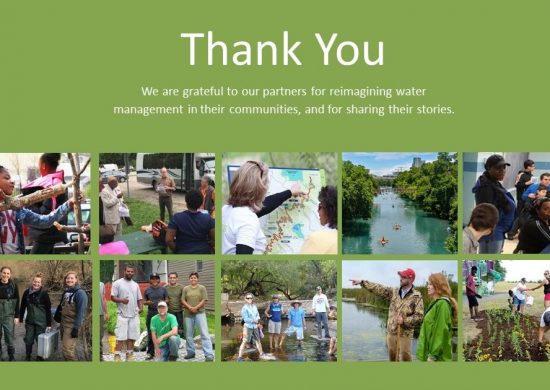Every weekend, thousands of Americans all across the U.S. volunteer their time and energy to monitor the health of the nation’s waterways. According to US EPA, there are volunteer and non-governmental water quality monitoring programs in every state in the U.S. Some people monitor coastal waters, some rivers or lakes, some wetlands, and some all of the above. The common factor is that people value water resources and want to protect and enjoy them. These programs are essential because federal and state governmental programs are severely limited and shrinking all the time due to budget cuts. For example, the most recent national assessment of water quality, the National Water Quality Inventory, indicates that only 30% of U.S. surface waters were assessed by the states.
Last spring, Stephen Harper, Global Director, Environment and Energy Policy at the Intel Corporation, and I attended a conference at the Aspen Institute about how better use of data can improve water resource management in the U.S. We began to talk about the use of low cost technology to better equip the public to engage effectively in water resource protection. Ultimately, we decided that we didn’t know enough at this point to decide how to ensure that the water resource data that the public collects is used to greatest advantage.
The result of those discussions has been the development of a project between the Intel Corporation and the Pisces Foundation to do a national survey of watershed groups and others involved in water resource monitoring. We will seek to find out what types of parameters they are monitoring for, what equipment they are using, how they are sharing the data with others, how they are analyzing and arraying the data, and how they are using the information to take action to improve water resource management. The survey will be designed to help government, NGOs, foundations, and the private sector to understand the gap between the monitoring, reporting, and information sharing technologies that people are now using and what they’d like to have access to in order to accomplish their environmental and public health objectives. Of course, we will make all of this information publicly available at the conclusion of the survey.
Intel Corporation has offered the assistance of its User Experience Group to help design, disseminate, and analyze the survey results. We will seek the assistance of a Steering Committee of experts in citizen science, water resource monitoring, and information technology to guide our efforts as well. Kickoff of the survey is anticipated in early 2016. We are excited to be partnering on this project with Intel, and I am grateful to Stephen Harper for the development of the survey concept and the partnership to make it a reality.



